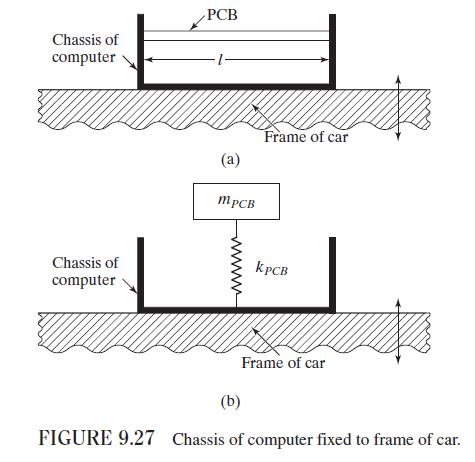In the PCB described in Problem 9.63, it is desired to reduce the displacement transmissibility to a
Question:
In the PCB described in Problem 9.63, it is desired to reduce the displacement transmissibility to a value of 0.25. If the chassis mass is 50 percent of the mass of the PCB, determine the necessary stiffness \((k)\) and damping constant \((c)\) of the isolator if the damping ratio of the isolator is required to be 0.01.
Data From Problem 9.63:-
A printed circuit board (PCB), made of fiber reinforced plastic composite material, is attached to a chassis that is attached to a motor vibrating at a speed of \(3000 \mathrm{rpm}\). The PCB can be modeled as a fixed-fixed beam, similar to the one shown in Fig. 9.27, with a length (l) \(20 \mathrm{~cm}\), width \((w) 16 \mathrm{~cm}\), thickness \((t) 0.2\mathrm{~cm}\), mass (m) \(1.0 \mathrm{~kg}\), and Young's modulus \((E)\) \(12.5 \times 10^{9} \mathrm{~N} / \mathrm{m}^{2}\). Determine the following:
a. Stiffness of the PCB
b. Natural frequency of the PCB
c. Displacement transmissibility of the PCB Assume the damping to be negligible.
Figure 9.27:-

Step by Step Answer:






